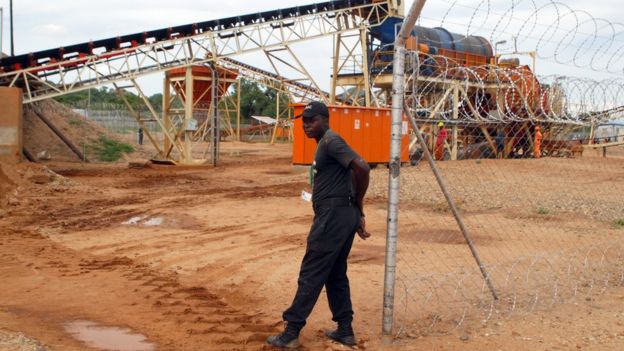
Introduction
Several Acts of Parliament contain provisions permitting the President or a Minister to make statutory instruments ‒ regulations, orders and so on ‒ which amend the Acts themselves. For example:
- The Schedule to the Land Acquisition Act sets out principles which must be followed in assessing compensation to be paid for farms compulsorily acquired by the State. Section 50 of the Act states that the Minister of Lands may by statutory instrument amend the Schedule by adding, altering or deleting any of the principles.
- The Transfer of Offenders Act has a schedule listing countries to which convicted offenders may be sent to serve out their sentences. Section 3 of the Act states that the Minister of Justice may by statutory instrument amend the Schedule in order to add further countries to the Schedule or to delete countries from it.
- The Schedule to the Administrative Justice Act lists administrative decisions and actions which cannot be challenged under the Act. Section 11(6) of the Act gives the Minister of Justice power to make statutory instruments adding items to or deleting them from the Schedule.
- And section 3 of the Finance Act ‒ the Act which sets the rates of income tax and many other taxes ‒ gives the Minister of Finance power to make regulations amending the rate of any tax that is levied under the Act.
It was this last provision ‒ section 3 of the Finance Act ‒ that came under scrutiny in a recent case, Mlilo v Minister of Finance & Economic Planning HH-605-2019. The background to the case was that the Minister had used his power under section 3 of the Finance Act to publish regulations [SI 205 of 2018] which amended various provisions of the Act in order to raise the intermediated money transfer tax [IMT tax] to 2 per cent. Mr Justice Zhou ruled that both section 3 of the Act and the Minister’s regulations were unconstitutional. The full judgment can be accessed on the Veritas website [link].
Summary of the Mlilo Case
The Minister’s argument in Mlilo’s case was that SI 205/2018 was specifically authorised by section 3 of the Finance Act, which not only confers regulation-making powers on the Minister but goes on to expand those powers by explicitly providing that:
- such regulations “may amend or replace any rate any of any tax, duty, levy or charge or duty that is charged or levied in terms of any Chapter of this Act”;
- the amended or replaced rate may be implemented immediately, but not backdated to a date before the gazetting of the regulations; and
- the regulations must be confirmed by an Act of Parliament.
On the face of things, the Minister’s argument was correct. The Finance Act apparently authorised him to make regulations amending the Act’s provisions specifying the rate of the IMT tax. Which was exactly what the Minister had done in SI 205/2018.
The applicant’s counsel, Mr Tendai Biti, on the other hand, pointed out that:
- section 3 of the Finance Act was passed by Parliament before the adoption of the current Constitution;
- the Constitution placed new limits on Parliament’s power to delegate law-making powers to Ministers, particularly in section 134, which states that:
- “Parliament’s primary law-making power must not be delegated”
- section 3 unconstitutionally goes beyond those limits and must be regarded as overridden by the Constitution to the extent of any inconsistency.
Justice Zhou accepted this argument. He ruled that by amending the Finance Act, the Minister was exercising part of “Parliament’s primary law-making power”, something expressly prohibited by section 134(a) of the Constitution. It was also inconsistent with the principle of separation of powers. The Judge therefore declared SI 205/2018 invalid and set it aside.
The essence of Justice Zhou’s decision is that a Minister cannot by statutory instrument lawfully amend an Act of Parliament, even when the Act of Parliament specifically authorises the Minister to do so.
Importance of the Mlilo decision
For taxpayers, at least in the short term, the importance of the decision is not very great. By the time it was handed down, SI 205/2018 had already been confirmed by the Finance (No. 2) Act, 2019 (No. 7/2019) gazetted on 21st August, a provision backdated to 12th October 2018. That development left the 2% IMT tax in place, subject to a possible future legal challenge to the constitutionality of backdating the confirmation to 12 October last year.
In the long term, on the other hand, the decision could be momentous. As noted at the beginning of this bulletin, the Finance Act is by no means the only Act of Parliament that explicitly empowers the President or a Minister to make statutory instruments amending an Act. The reasoning behind the decision, therefore, creates doubt about the validity of similar enabling provisions in the other Acts – and any statutory instruments made in reliance on those enabling provisions. This includes such very recent statutory instruments as:
- SI 209/2019 of 23rd September [link] – new Standard Scale of Fines denominated in ZWL dollars
- SI 213/2019 of 27th September [link] – Presidential Powers regulations amending the Exchange Control Act – already noted in Bill Watch 50/2019 [link].
Conclusion
It seems likely that the Constitutional Court will in due course have to decide whether or not section 134 of the Constitution calls for a broad and rigid rule that a statutory instrument can never amend an Act of Parliament. Meanwhile, the Government will have to bear in mind the risk posed by the Mlilo decision whenever enacting statutory instruments that do so.
Veritas makes every effort to ensure reliable information, but cannot take legal responsibility for information supplied
Post published in: Featured




















 Olga V. Mack is the CEO of
Olga V. Mack is the CEO of